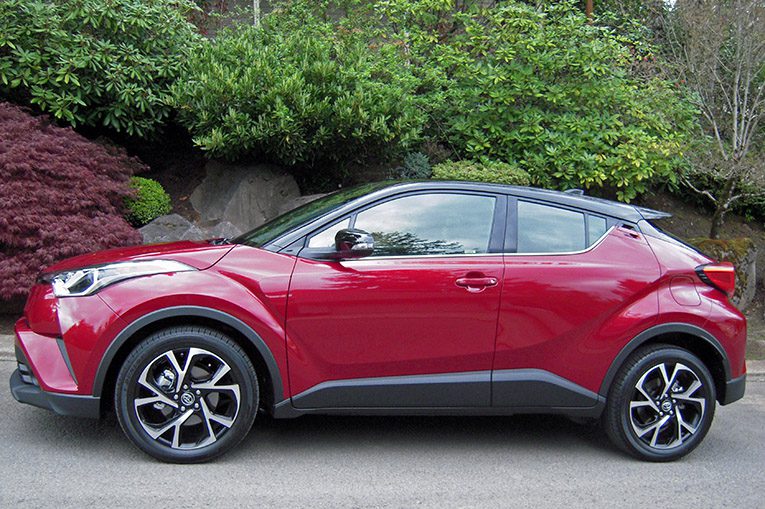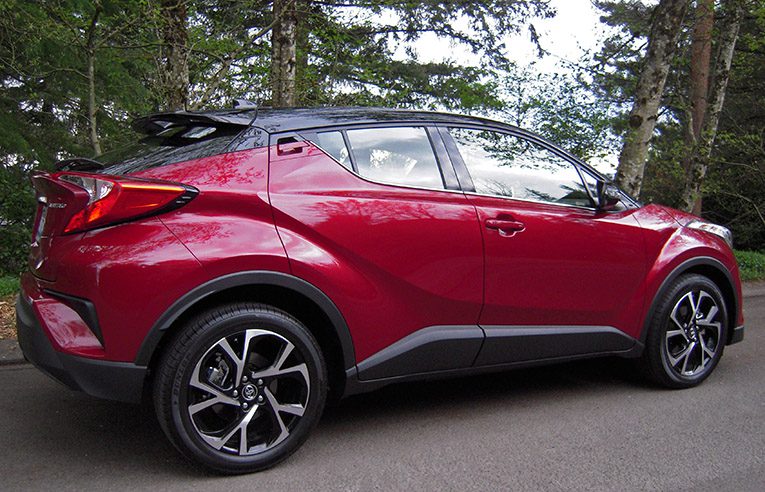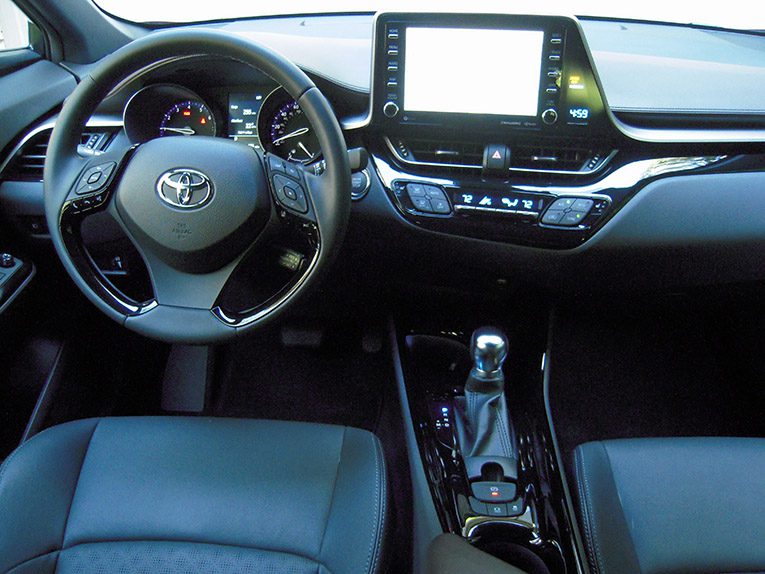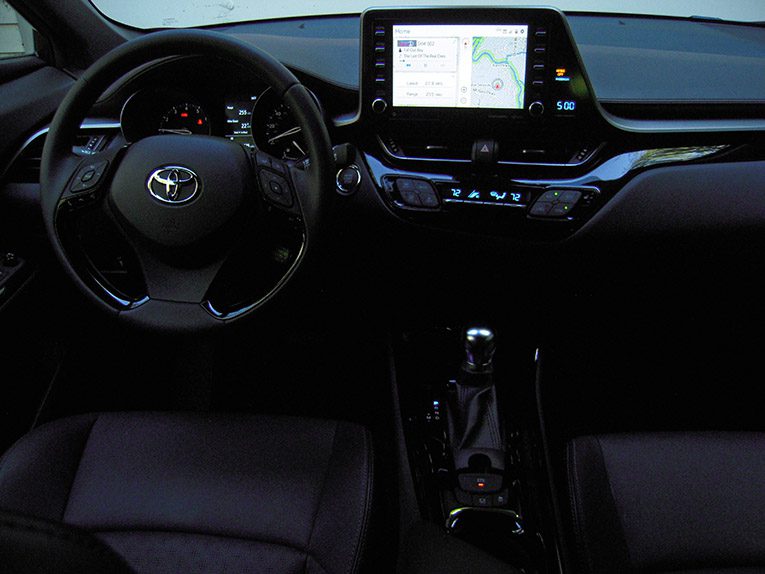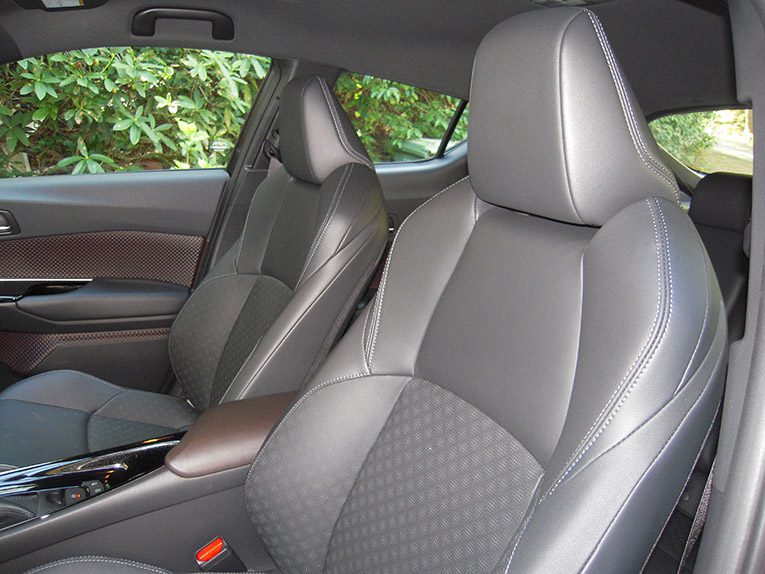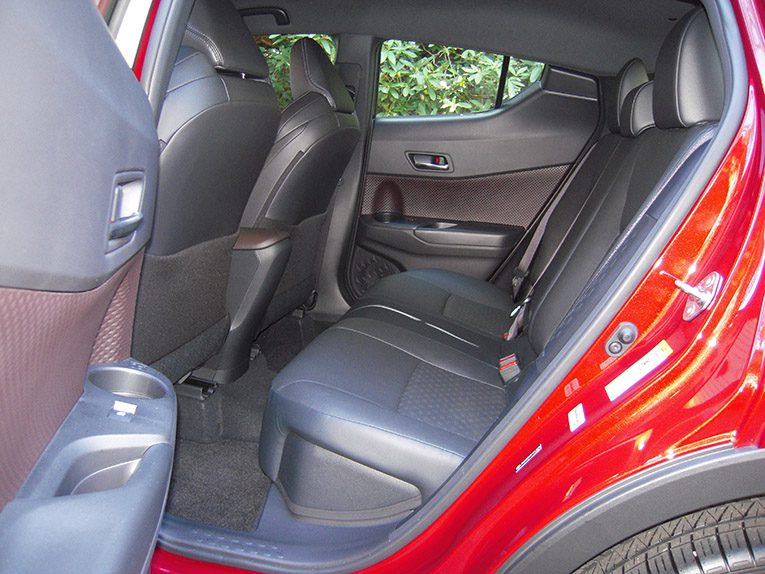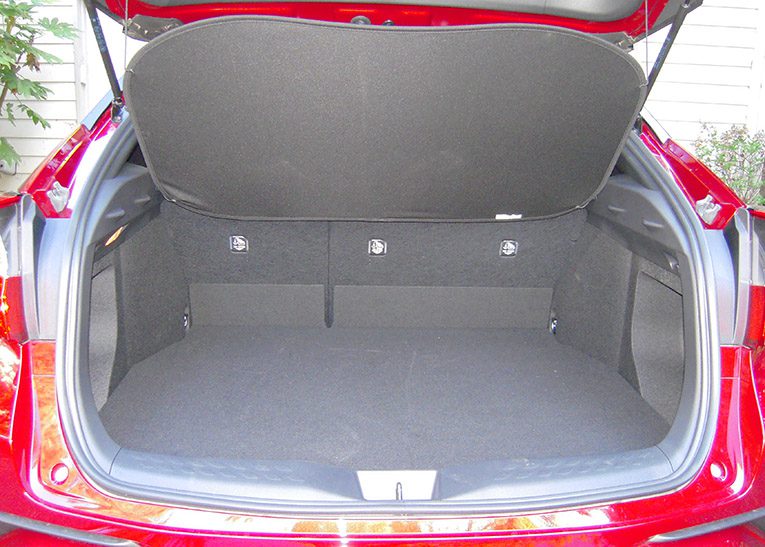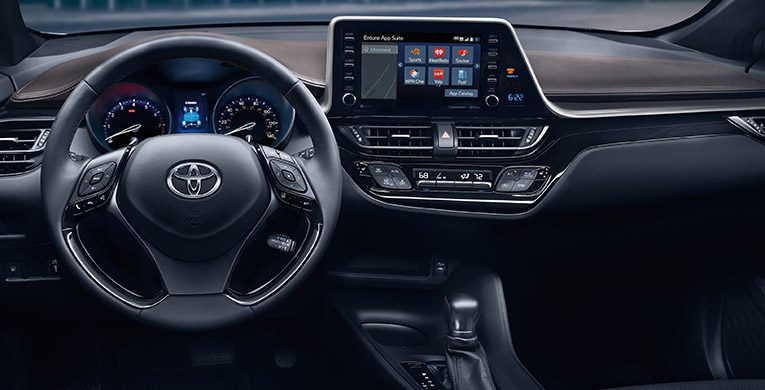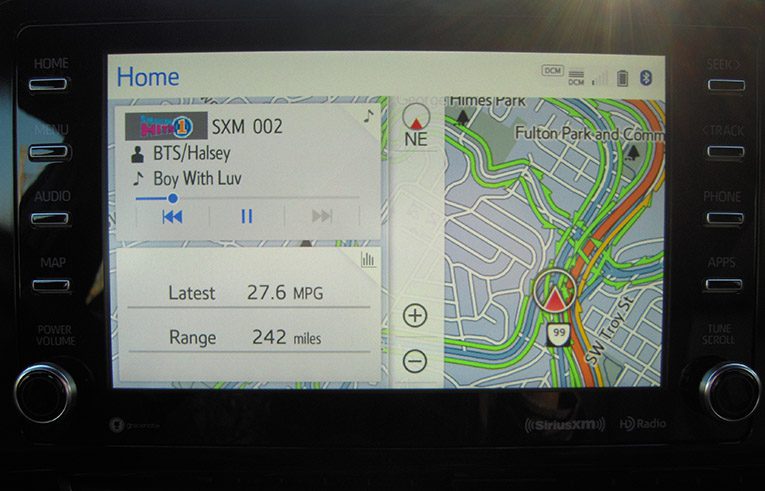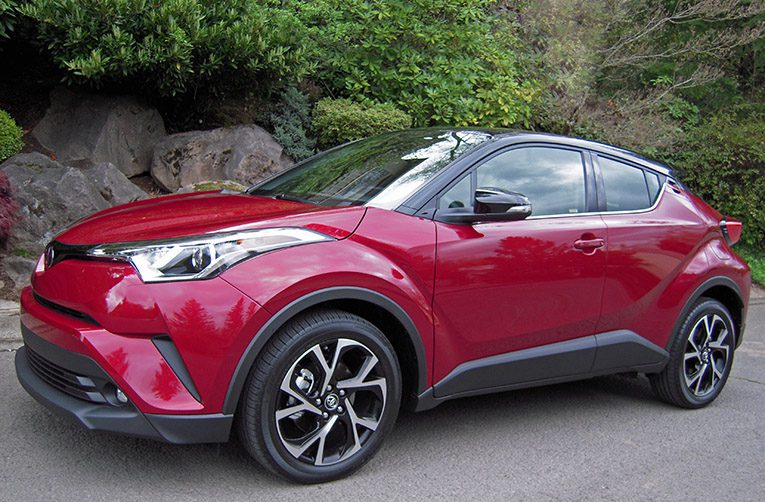With the popularity of crossovers and SUVs continuing to grow, more car makers are adding tiny SUVs to their line-ups. They’re practical, usually cost less than their larger cousins and provide that coveted higher seating position.
The five-passenger Toyota C-HR was introduced for the 2018 model year and gets a few updates for 2019. It boasts lots of standard safety features and composed handling, but lags behind rivals when it comes to performance and room for passengers and cargo.
The 2019 C-HR is available in three trims: LE, XLE and Limited. Starting prices range from $20,995 to $26,050. Several safety features are standard on all trims. Front-wheel-drive is standard; all-wheel-drive is not available.
The C-HR is powered by a 2.0-liter four-cylinder engine that makes 144 horsepower and 139 pound-feet of torque, paired with a continuously variable transmission. Performance is lackluster. The C-HR is pokey off the line and it can take a while to get up to highway speeds when you’re trying to merge or pass. And there’s noticeable engine and road noise. At least the ride is smooth and the C-HR doesn’t have a lot of body lean when cornering.
The C-HR has decent fuel economy for the class. EPA ratings for my tester are 27 mpg city and 31 mpg highway with a combined rating of 29. I got 29 during my week with a mix of city and highway driving.
The interior has a clean and simple design. There are some soft-touch materials as well as hard plastics. The front seats are comfortable with decent leg- and headroom. But the second row is cramped and the small rear windows can make backseat passengers feel claustrophobic.
Standard features include cloth sport seats, six-way manually adjustable front seats, dual-zone automatic climate control, Toyota’s Entune infotainment system with an eight-inch touch screen, Bluetooth, USB port, and Apple CarPlay (but no Android Auto).
Several driver assistance technologies are also standard including automatic high beams, lane departure alert with steering assist, dynamic radar cruise control, and pre-collision system with pedestrian detection.
Options include push-button start, leather-trimmed seats, eight-way manually adjustable driver’s seat, heated front seats, rain-sensing windshield wipers, LED fog lights, the Entune app suite, navigation, HD Radio, and additional driver assistance technologies including blind spot monitoring, and rear cross traffic alert.
The Entune infotainment system is updated for 2019 with an eight-inch screen and Apple CarPlay. The system is quick to respond to voice and touch commands, but some commands require you to navigate through a number of menus and submenus. At least there’s a knob for adjusting the volume.
Tiny SUVs and Crossovers don’t have a ton of cargo space, and the C-HR has less than many rivals. There are 19 cubic feet behind the second row and 36.4 cubes with the second row folded down.
The good:
Cute exterior styling
Smooth ride
Lots of standard safety features
Standard Apple CarPlay (but no Android Auto)
The not-so-good:
Lackluster performance
Pokey acceleration
Noticeable engine and road noise
Cramped back seat
Less cargo space than competitors
Not available with AWD
Pricing info:
My tester starts at $26,000. The Entune 3.0 Premium Audio with App Suite, navigation, voice recognition, HD Radio, and Entune 3.0 Toyota Connected Services are $1,040. Two-tone paint is $500. Special color is $395. Delivery fee is $1,045 bringing the grand total to $28,980.
Bottom line:
If you’re shopping for a tiny crossover and want a dependable vehicle with composed handling and a smooth ride, the 2019 Toyota C-HR is worth a look. But you’ll also want to check out rivals which offer better performance and more room for passengers and cargo.



